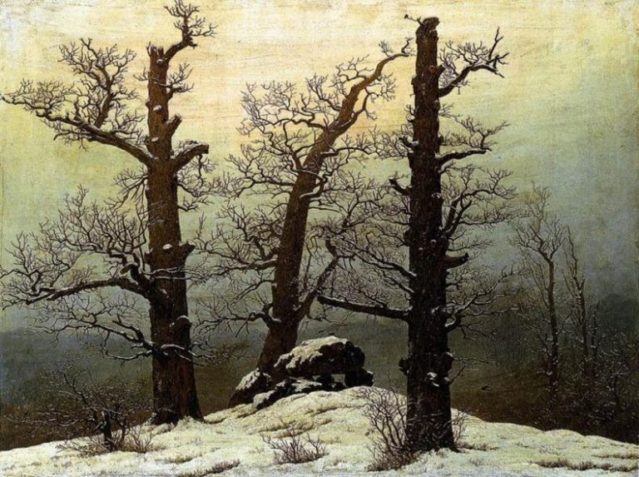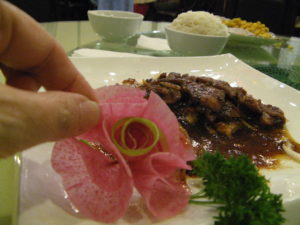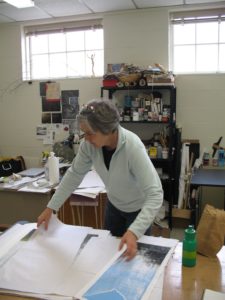The juror for the Appalachian Art show this year was previously at Wellesley College as museum curator and also lecturer in their dept. of Art. David Mickenberg also had professional experience at the Louvre, and the Art Institute of Chicago, among other things. This interested me and so I selected some things to enter that I hoped might catch his interest. One piece I entered didn’t even make the show (so it goes) but this piece won an award of excellence, I am glad to report.
 Like so many for me, this piece is marked out not with any message intended, but rather as a physical response to all that rumbles within. And there is a lot rumbling within. It surprised me when it got done. I started it last summer and fine-tuned it just last month. There is one collaged phrase that is embedded in other text-like markings: “pray for Jerusalem’s peace.” Again, I emphasize, this piece was not a pretext to say that, but rather a natural and right seeming way to finish what I was looking at. There is a lot of energy in this piece, layering, piercing and shroudedness. I showed it to a friend who is very bright but very un-artsy and he said before seeing the text fragment “it looks like a swastika.” Ridiculous! I went home and did some research on that symbol and then became even more interested in that strange possibility, especially that in my case the symbol is definitely broken up at its core. I say all this to try to help the reader understand some of what happens in art making: it is a duet, it is intention made visual, it is something that goes beyond the artist. It can be deadly or it can be good, and often is maybe even both. Such it is for things that come from our hands and our hearts. Such it is when even these things can go beyond our hands and our hearts.
Like so many for me, this piece is marked out not with any message intended, but rather as a physical response to all that rumbles within. And there is a lot rumbling within. It surprised me when it got done. I started it last summer and fine-tuned it just last month. There is one collaged phrase that is embedded in other text-like markings: “pray for Jerusalem’s peace.” Again, I emphasize, this piece was not a pretext to say that, but rather a natural and right seeming way to finish what I was looking at. There is a lot of energy in this piece, layering, piercing and shroudedness. I showed it to a friend who is very bright but very un-artsy and he said before seeing the text fragment “it looks like a swastika.” Ridiculous! I went home and did some research on that symbol and then became even more interested in that strange possibility, especially that in my case the symbol is definitely broken up at its core. I say all this to try to help the reader understand some of what happens in art making: it is a duet, it is intention made visual, it is something that goes beyond the artist. It can be deadly or it can be good, and often is maybe even both. Such it is for things that come from our hands and our hearts. Such it is when even these things can go beyond our hands and our hearts.
I’ve been doing some reading this month also in a fine book I got from one of my daughters for Christmas: “Objects of Grace; Conversations on Creativity and Faith,” by James Romaine. In the great interviews he has here he often discusses with the artists the idea that art making is a form of prayer. I never, ever thought of that before. I am not sure I even agree, for prayer as I practice it is much more proactive, it is also much more specific. But there is some parallel in that with both prayer and artmaking there is an extravagant use of time and trust, of faith and practice. Today, as Purim is being celebrated, I offer this prayer, entitled “Fight Unseen,” with prayer.
 Think about it, your body is a very dark place on its own. When scopes go into our bodies they must bring their own light, like miner’s lamps, to be able to see anything. When bodies are on surgical tables they are dark chasms until the surgeon’s knife cuts open flesh and the huge lights over the table light up what was hidden and all closed in. We only see these things because our eyes have taken in light first. This is simply true, and the physical is a signal/type for what is more important, the spiritual. Looking into someone’s eyes is often so intuitively instructive as to whether there is any life or light in there. According to Jesus, for any light to be inside us, we have to let it in, we have to allow our lamps to be lit. We cannot come forth with light on our own. Light was the 1st creative accomplishment in Genesis and it comes forth from God. This is basic though I stumble over it.
Think about it, your body is a very dark place on its own. When scopes go into our bodies they must bring their own light, like miner’s lamps, to be able to see anything. When bodies are on surgical tables they are dark chasms until the surgeon’s knife cuts open flesh and the huge lights over the table light up what was hidden and all closed in. We only see these things because our eyes have taken in light first. This is simply true, and the physical is a signal/type for what is more important, the spiritual. Looking into someone’s eyes is often so intuitively instructive as to whether there is any life or light in there. According to Jesus, for any light to be inside us, we have to let it in, we have to allow our lamps to be lit. We cannot come forth with light on our own. Light was the 1st creative accomplishment in Genesis and it comes forth from God. This is basic though I stumble over it.


